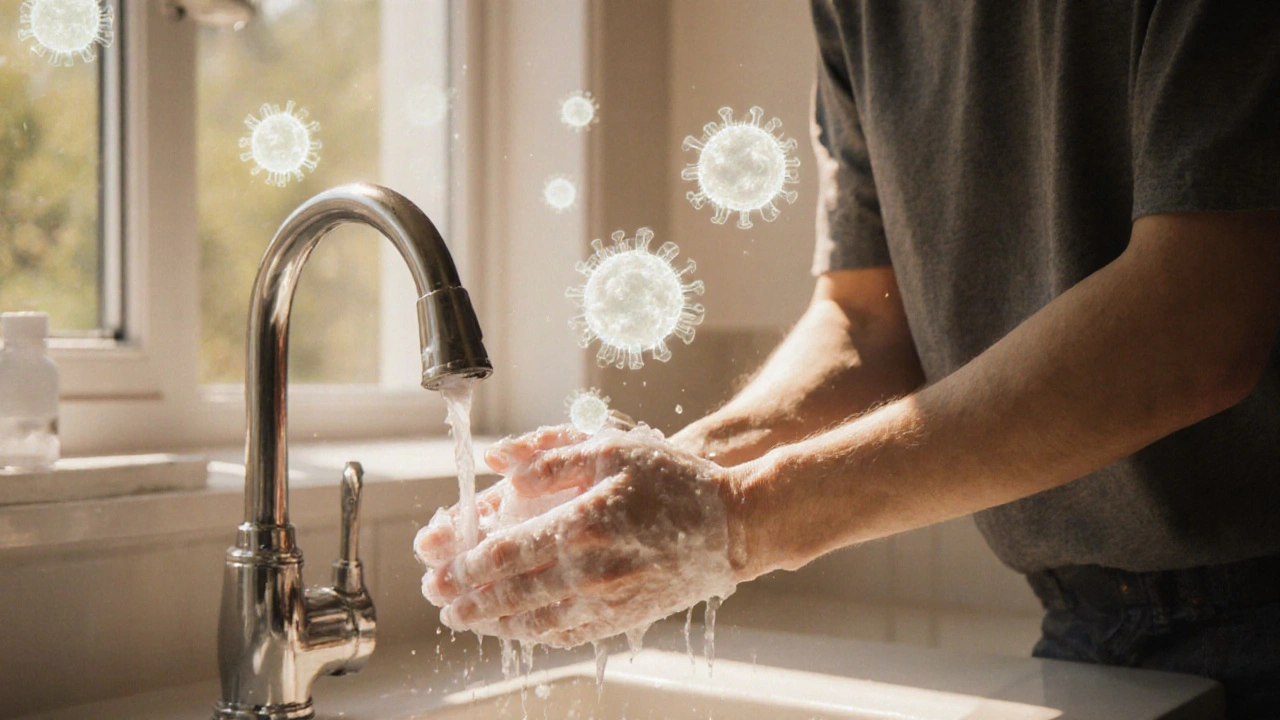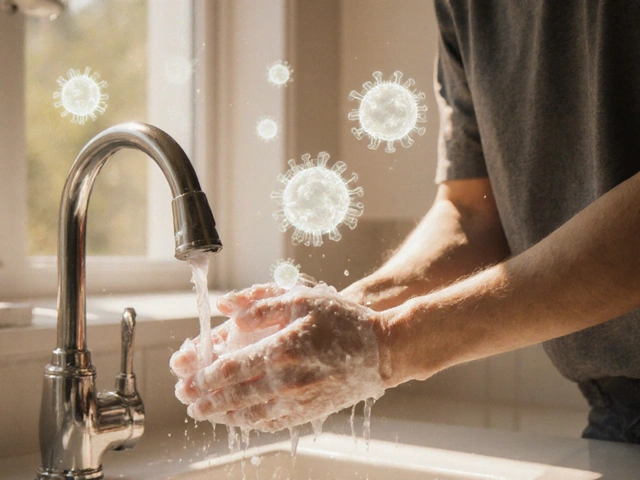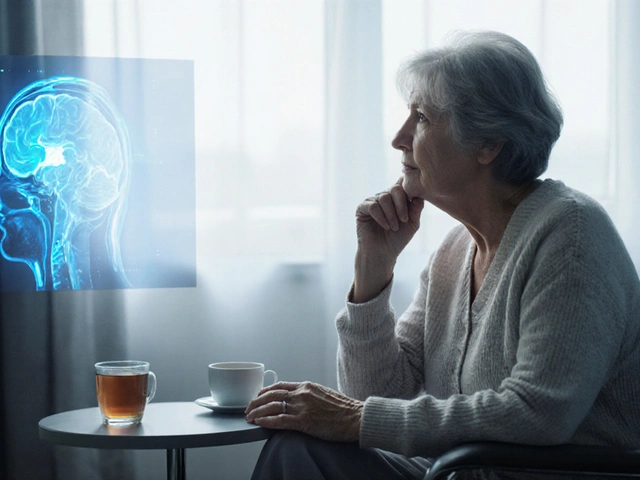Blood cancer is a group of malignancies that originate in the blood‑forming tissues, such as bone marrow, or in the cells of the immune system. These disorders-including leukemia, lymphoma, and multiple myeloma-disrupt normal blood cell production and severely compromise the body’s ability to fight infection.
Why Blood Cancer Increases Infection Risk
The immune system relies on white blood cells, especially neutrophils, to identify and destroy pathogens. In blood cancer patients, two forces work against this defense:
- Disease‑related suppression: Cancerous cells crowd out healthy marrow, leading to low white‑cell counts even before treatment begins.
- Treatment‑related suppression: Chemotherapy, targeted agents, and stem‑cell transplants deliberately kill rapidly dividing cells, which includes the precursors of neutrophils.
The result is neutropenia, a condition where the absolute neutrophil count (ANC) drops below 1,500cells/µL. When ANC falls under 500cells/µL, patients enter the high‑risk zone for febrile neutropenia, a medical emergency that can quickly progress to sepsis.
How Different Blood Cancers Shape the Risk Profile
| Type | Typical Neutrophil Nadir (ANC) | Common Infections | Prophylaxis Recommendation |
|---|---|---|---|
| Acute Leukemia | ≤200cells/µL | Gram‑negative bacteremia, invasive fungal disease | Antibacterial + antifungal agents; G‑CSF |
| Chronic Lymphocytic Leukemia (CLL) | 300‑800cells/µL | Encapsulated bacteria (Streptococcus pneumoniae), herpes zoster | Vaccination + antibacterial prophylaxis for high‑risk |
| Multiple Myeloma | 400‑1,200cells/µL | Respiratory viruses, urinary‑tract infections | Annual flu vaccine, consider antibacterial prophylaxis during intensive regimens |
This table shows why a one‑size‑fits‑all approach won’t work. Each disease has a characteristic neutrophil nadir and a distinct infection spectrum, guiding both preventive and therapeutic choices.
Everyday Practices That Cut Infection Chances
Even with modern medicine, the simplest habits often make the biggest difference. Below are practical steps patients and caregivers can adopt right away.
- Hand hygiene: Wash with soap for at least 20 seconds before meals, after using the restroom, and after any public contact. Alcohol‑based rubs are acceptable if water isn’t available.
- Protective environment: During the deepest neutropenic phase (usually days7‑14 after chemo), stay in a clean room with HEPA filtration if possible. Avoid crowds, especially during flu season.
- Food safety: Cook meats to an internal temperature of 165°F, avoid raw eggs, unpasteurized dairy, and refrigerated deli meats that have been sitting more than 48hours.
- Dental care: See a dentist before starting treatment and maintain good oral hygiene. Dental infections can seed the bloodstream during neutropenia.
- Pet precautions: Wash hands after handling pets, keep reptiles and amphibians out of the house, and clean litter boxes daily.
These measures address the most common pathways for bacteria and fungi to enter the body, turning everyday spaces into a defensive barrier.
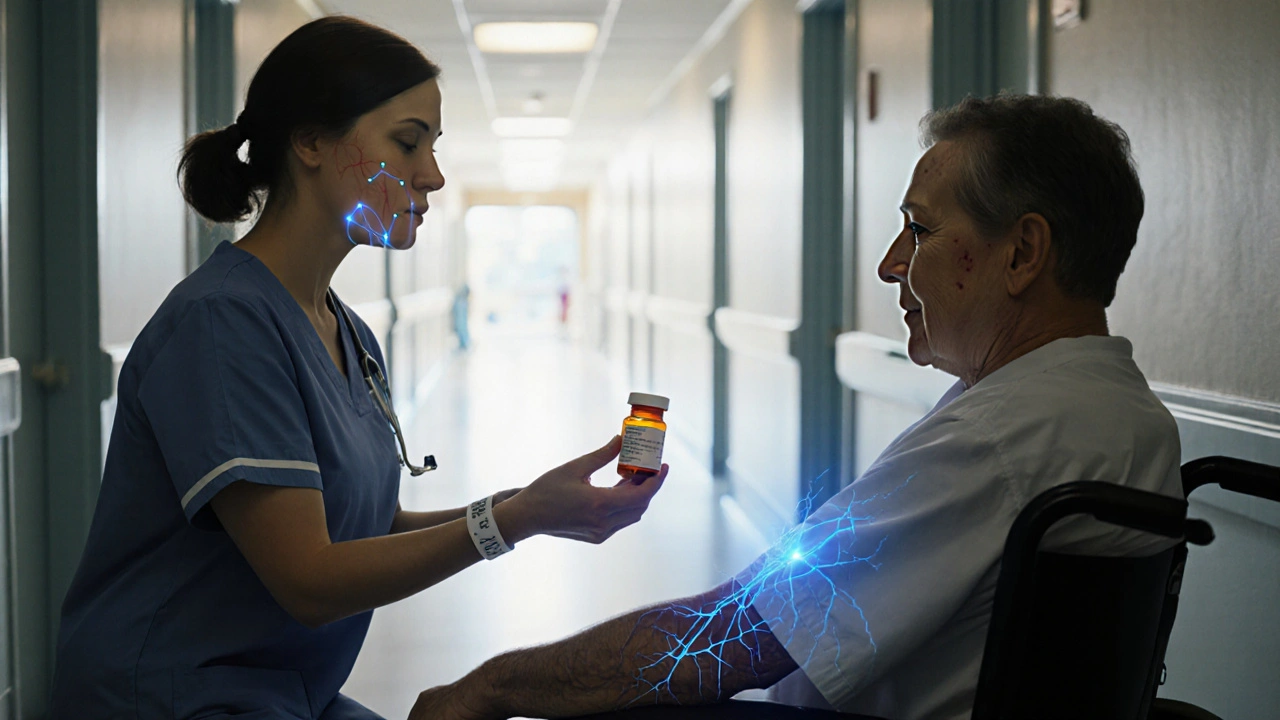
Medical Strategies to Shield the Immune System
Beyond lifestyle, several clinical interventions have proven to lower blood cancer infection risk when applied correctly.
- Prophylactic antibiotics: Fluoroquinolones (e.g., levofloxacin) are standard for acute leukemia patients with expected ANC <500cells/µL for >7days. Trimethoprim‑sulfamethoxazole also prevents Pneumocystis jirovecii pneumonia in lymphoid malignancies.
- Growth‑factor support: Granulocyte‑colony stimulating factor (G‑CSF) speeds neutrophil recovery, shortening the window of vulnerability.
- Vaccination: Inactivated influenza vaccine, pneumococcal conjugate vaccine (PCV13) followed by polysaccharide vaccine (PPSV23), and hepatitis B vaccine should be administered before immunosuppression whenever possible.
- Antifungal prophylaxis: For patients with prolonged neutropenia (<100cells/µL), agents such as posaconazole reduce invasive aspergillosis rates from 8% to <2%.
- Antimicrobial stewardship: Tailor antibiotics based on culture results to avoid resistance, as recommended by the CDC’s 2023 guidelines.
Coordinating these therapies requires a multidisciplinary team-oncologists, infectious disease specialists, pharmacists, and nursing staff-all working from the same risk‑assessment algorithm.
Red‑Flag Signs: When to Call a Doctor Immediately
Even with vigilant prevention, infections can still break through. Recognize these warning signs:
- Fever ≥38.3°C (101°F) or a single reading of ≥38.0°C (100.4°F) that persists for more than an hour.
- New cough, shortness of breath, or chest pain.
- Severe sore throat, oral ulcers, or painful swallowing.
- Sudden pain, redness, or swelling in any limb-possible cellulitis.
- Confusion, dizziness, or a rapid heart rate (>110bpm).
Prompt medical evaluation, often with a full blood panel and blood cultures, can be life‑saving. Patients on prophylactic antibiotics should still seek care; the regimen can be adjusted based on the identified pathogen.
Related Concepts and Next Steps
Understanding infection risk in blood cancer opens doors to several adjacent topics worth exploring:
- Immune reconstitution after stem‑cell transplant.
- Long‑term vaccine responses in immunocompromised adults.
- Emerging antimicrobial‑resistance patterns in oncology wards.
- Psychological impact of infection anxiety on cancer patients.
- Tele‑health monitoring tools for early fever detection.
Each of these subjects deepens the picture of how modern medicine balances aggressive cancer control with the need to preserve a functional immune system.
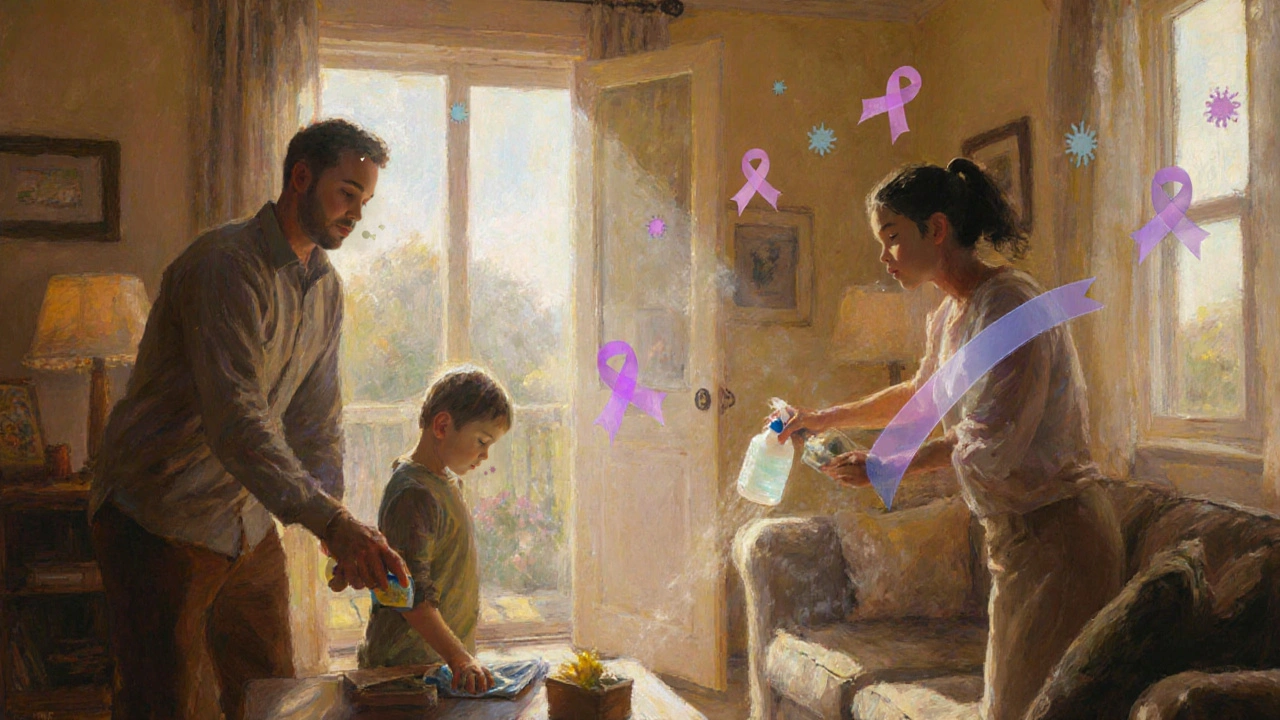
Frequently Asked Questions
What makes blood cancer patients more prone to infections?
Both the disease itself and its treatments suppress white‑blood‑cell production, especially neutrophils, leaving a gap in the body’s first line of defense. Low neutrophil counts (<500cells/µL) are strongly linked to bacterial and fungal infections.
How long does neutropenia usually last after chemotherapy?
The nadir typically occurs 7‑14days post‑infusion and recovers within 2‑3weeks, but exact timing varies by regimen, dosage, and individual marrow reserve.
Should I get the flu shot if I’m undergoing chemotherapy?
Yes. Inactivated influenza vaccine is safe and recommended for all immunocompromised patients. It reduces flu‑related hospitalizations by up to 60%.
Are prophylactic antibiotics necessary for every blood cancer patient?
Not for everyone. Guidelines suggest them for patients expected to have prolonged neutropenia (<500cells/µL for >7days) such as acute leukemia or intensive myeloma regimens. For milder cases, vigilant monitoring may suffice.
What home signs indicate I should call my oncology team right away?
Any fever, new cough, shortness of breath, painful swallowing, sudden skin redness, or confusion warrants immediate contact. Early treatment reduces complications dramatically.
Can diet reduce infection risk during treatment?
A balanced diet rich in protein, vitamins A, C, D, and zinc supports immune repair. Avoid raw or undercooked foods that can harbor bacteria; stay hydrated to keep mucosal barriers healthy.

